Cheddar Herb Scones
This post may contain affiliate links that won’t change your price but will share some commission.
Cheddar Herb Scones are a cross between traditional scones and cheddar biscuits. They pair excellently with Jambalaya, Stews, and other hearty meals. Baked on a cast-iron griddle, they have a crunchy bottom and a fluffy, tender interior filled with cheddar cheese, herbs, and spices.
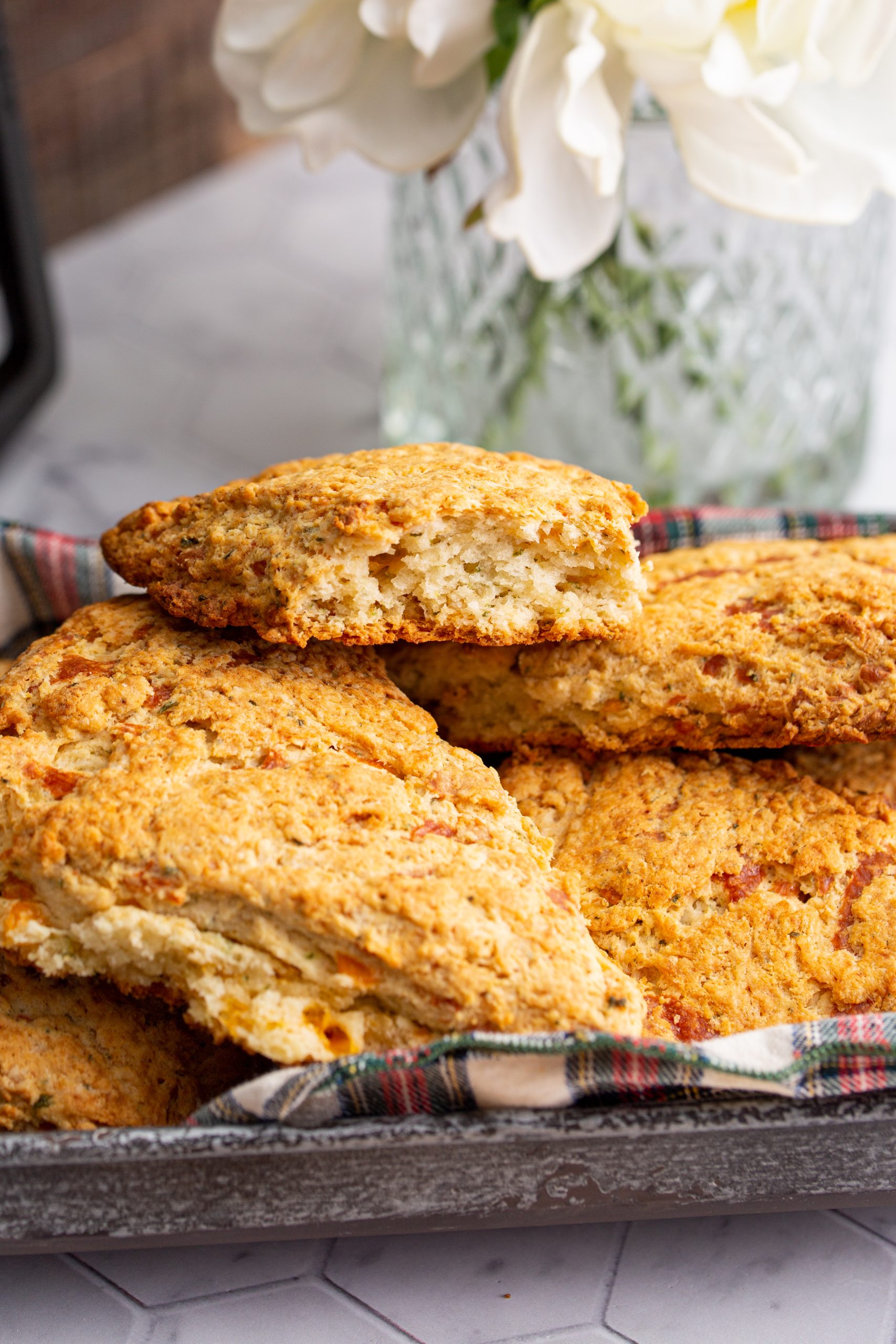
Cheddar Herb Scones
Scones – a Quick Bread
Like herb and cheddar biscuits, scones are a quick bread made with baking powder or baking soda instead of yeast. The dough itself is more on the wet side and rather shaggy. The result is a beautifully rustic side dish to any dinner.
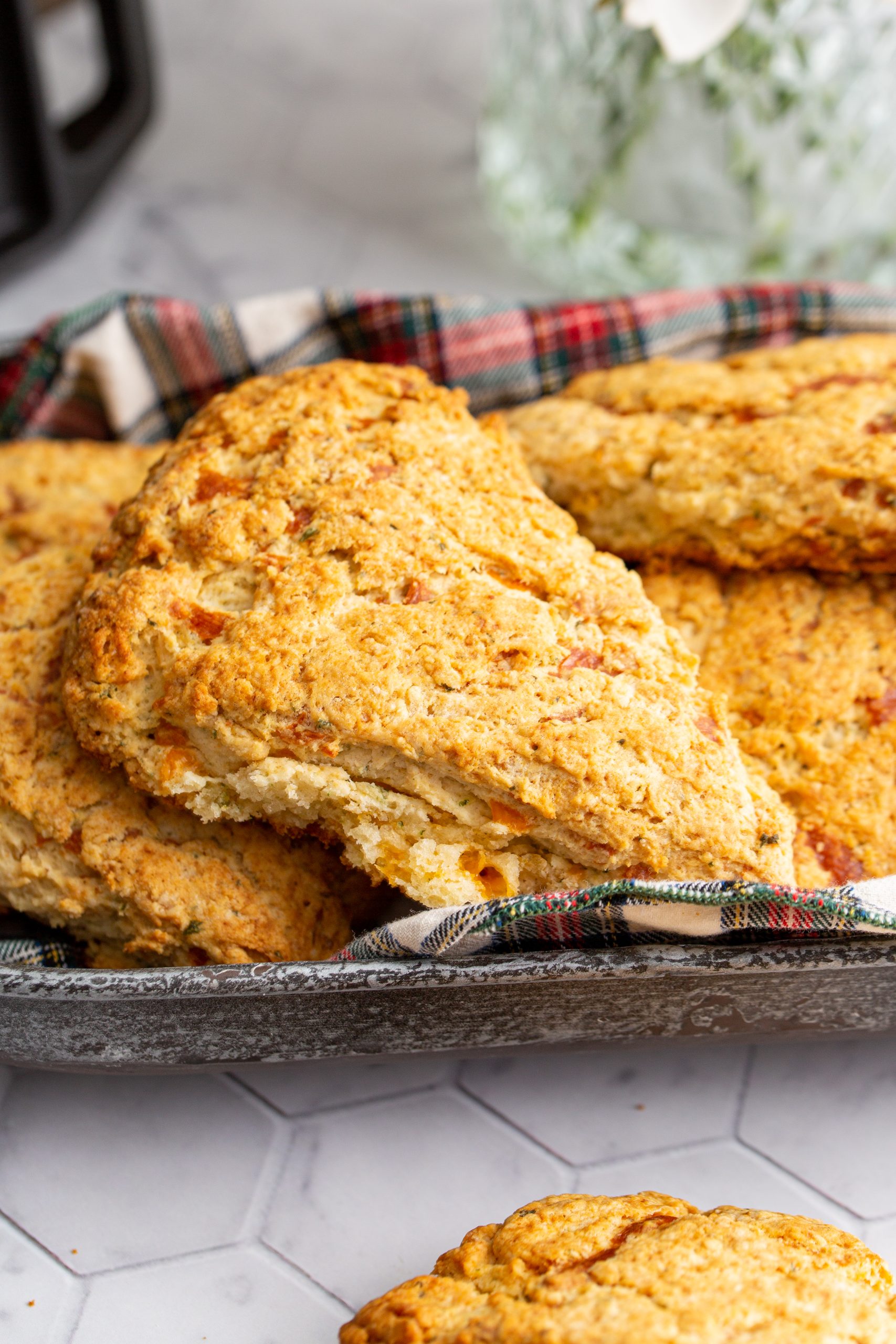
Scones are a staple of British cuisine and have been enjoyed for centuries. Traditionally, they are made with flour,
Understand cultures through food
I used to not care about the history of food. I just wanted it to taste good. I’m a big fan of new inventions, fusions, and combinations in the culinary world. But over the past year or so, as I’ve been on this culinary journey in school, I’ve realized that I really want to understand the authentic variations of foods before messing with them.
I want to taste what the culture made each recipe to be, and understanding the history of the culture at that time really helps to understand the chefs and home cooks of that time. It’s just making me a lot more appreciative of the food, and paired with the science behind it all…. I don’t know, it’s just making me a lot more grateful and ready to pay respect to the chefs who have come before.
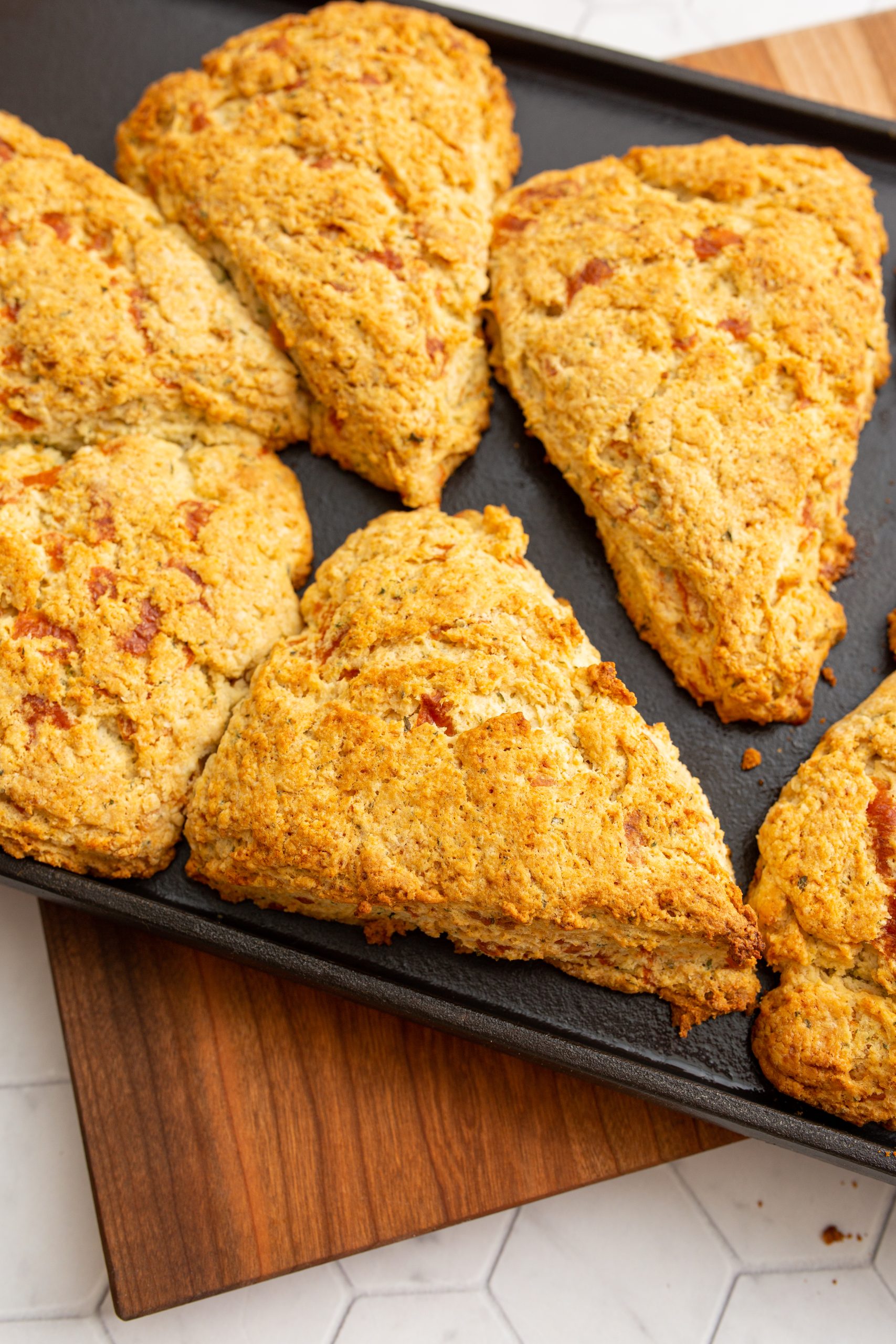
The Origins of Scones
The origins of scones are not entirely clear, but they are believed to have originated in Scotland in the early 1500s. The word scone comes from the Middle Dutch word schoonbrot, which means “beautiful bread.” Scones were initially made with oats and baked on a griddle, similar to a pancake. This is, in part, much like Irish Soda Bread because it was cooked over an open fire or some type of woodstove.
Over time, scones evolved and became made with flour,
Cheddar Herb Scones Ingredients
The full recipe with ingredient amounts and instructions is at the bottom of this post. You can save a tree and the recipe to your personal and private recipe box here on Call Me PMc. This way, you’ll never misplace it.
- Self-Rising Flour or All-Purpose Flour
- Sugar
- Salt
- Baking Powder
- Butter
- Milk
- Cheddar Cheese
- Dried Parsley
- Garlic Powder
How to Make Cheddar Herb Scones
Start by sifting all the dry ingredients together through a fine mesh strainer into a large bowl.
Dice the cold butter into small cubes before adding it to the dry ingredients. Using a pastry cutter or gloved hands, work the
Add the cheese and milk to the bowl and mix well with hands until a shaggy, sticky dough is the result. More or less milk may be required based on your environmental factors.
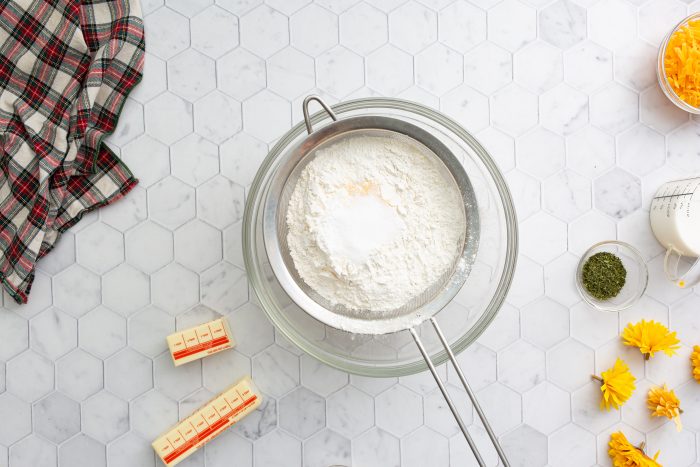
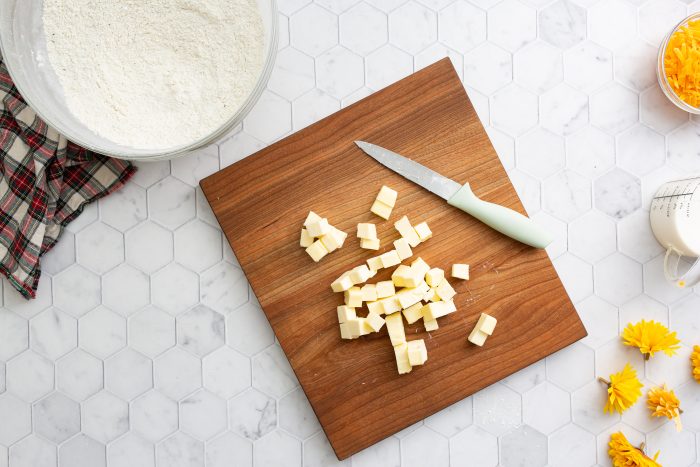
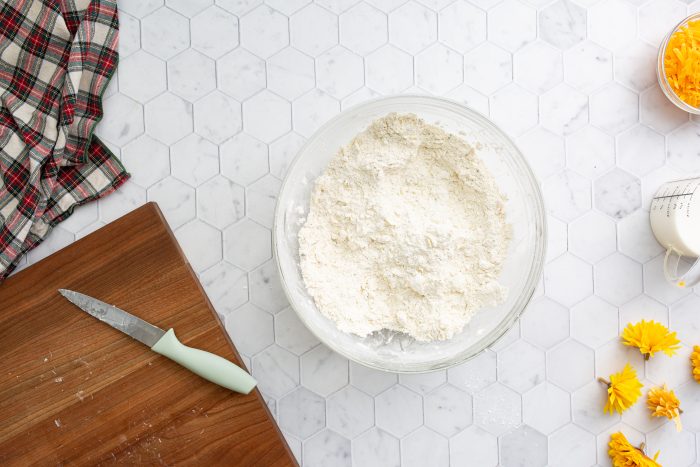
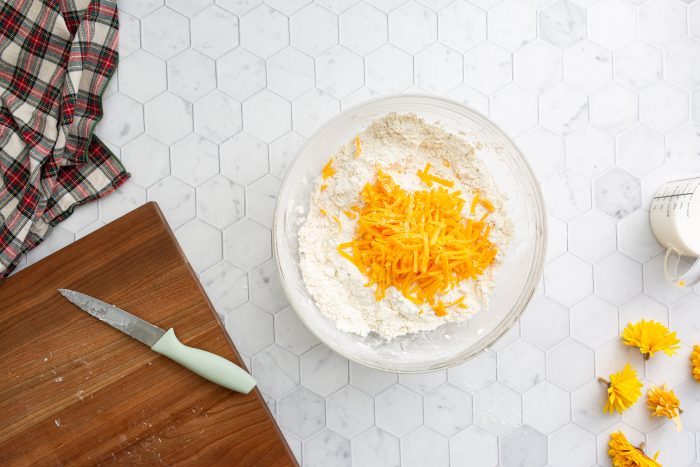
Once the dough has come together, scoop it out onto a lightly floured surface and shape it into one or two large circles using your hands and a rolling pin until about 1/2 inch in thickness.
Use a sharp knife or biscuit cutter to cut biscuits or scones. You can also form the scones freehand or using a scone mold. Once the scones are cut, possibly in batches, place them on the griddle with about an inch of space between each, as they will expand quite a bit during baking.
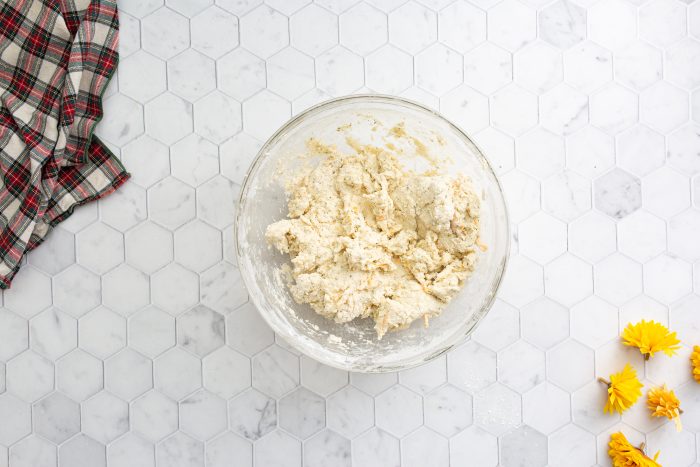
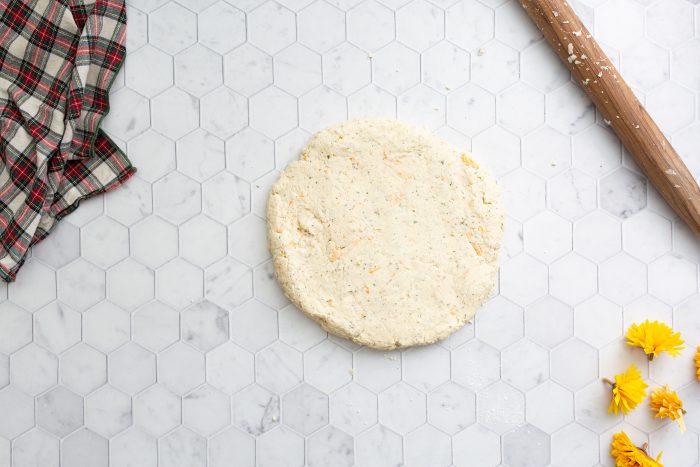
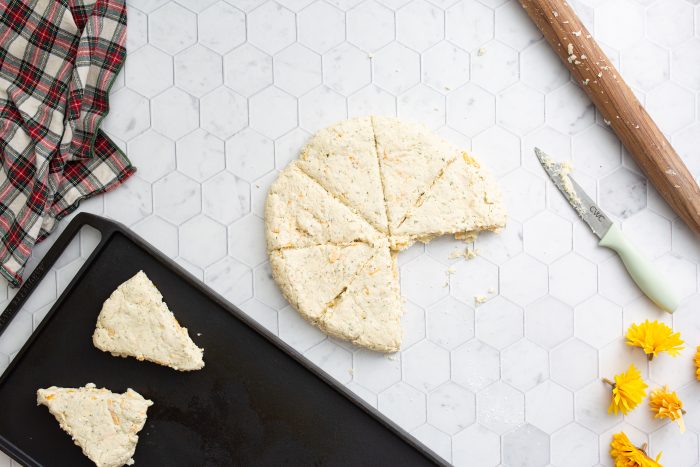
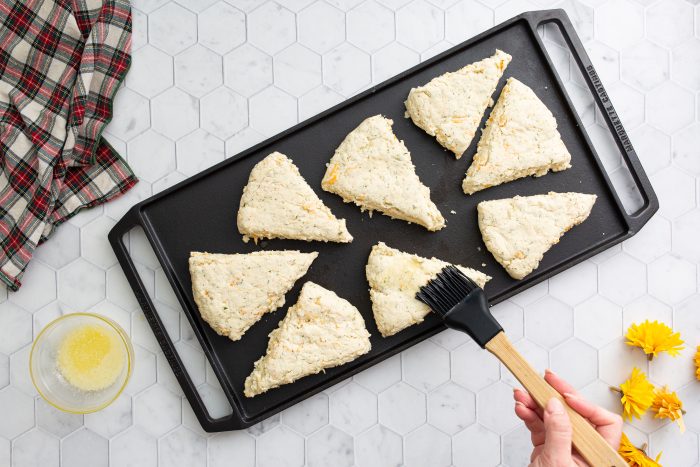
Use melted
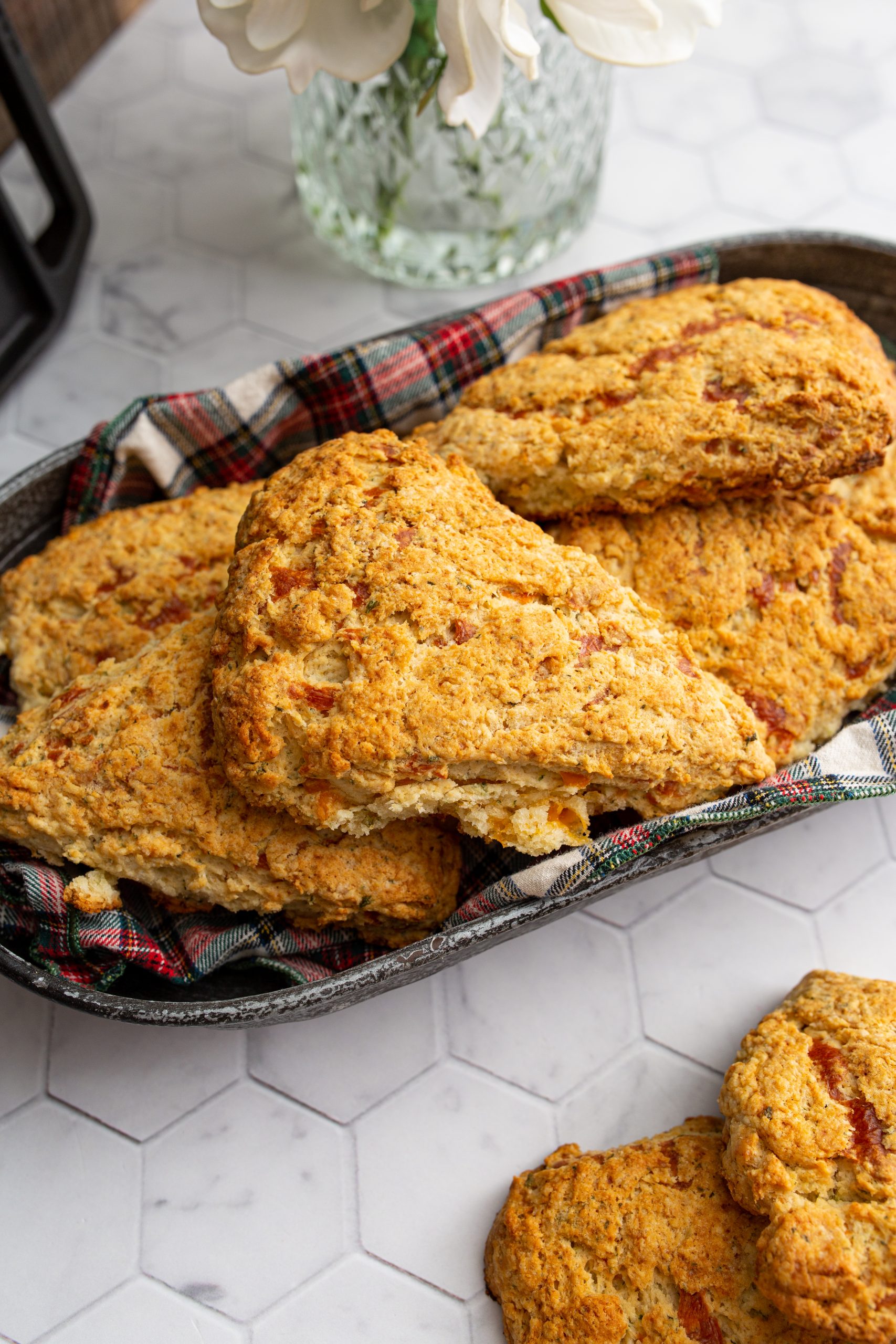
How to Make Cheddar Herb Scones
Tips and Tricks for Baking Cheddar Herb Scones
- Use cold
butter : Coldbutter is essential for creating the flaky texture of scones. To prevent too much from melting, cut thebutter into small cubes and only roughly work it into the dry ingredients with gloved hands or a pastry cutter. - Don’t overwork the dough: Overworking the dough can result in tough, dense scones. Be gentle when kneading the dough, and handle it as little as possible. Mix everything about 90% of the way in the bowl, but then finish mixing while also shaping on the countertop.
- Use a sharp cutter: A sharp cutter is important for cutting the scones evenly and preventing them from sticking to the cutter. If you don’t have a sharp cutter, you can use a knife to cut the dough into wedges. Shaping the dough on a lightly floured surface or parchment will help keep the scones from sticking.
- Do not preheat your griddle. The griddle will get nice and hot during baking, and preheating it could result in burned bottoms.
- Brush with egg wash or
butter : Brushing the tops of the scones with beaten egg before baking will give them a shiny, golden brown finish. Brushing the tops of the scones with meltedbutter will give them a dull, tan color but have a buttery emphasis on taste! - Use a scone mold: A scone mold can help give your scones a more uniform shape and size. If you don’t have a scone mold, you can still shape the dough into a disk and cut it into wedges. This recipe creates very large scones. You can split the dough in half, shape, and cut to double the amount of scones for still good-sized scones. You can also cut these into biscuits and bake them in a skillet.
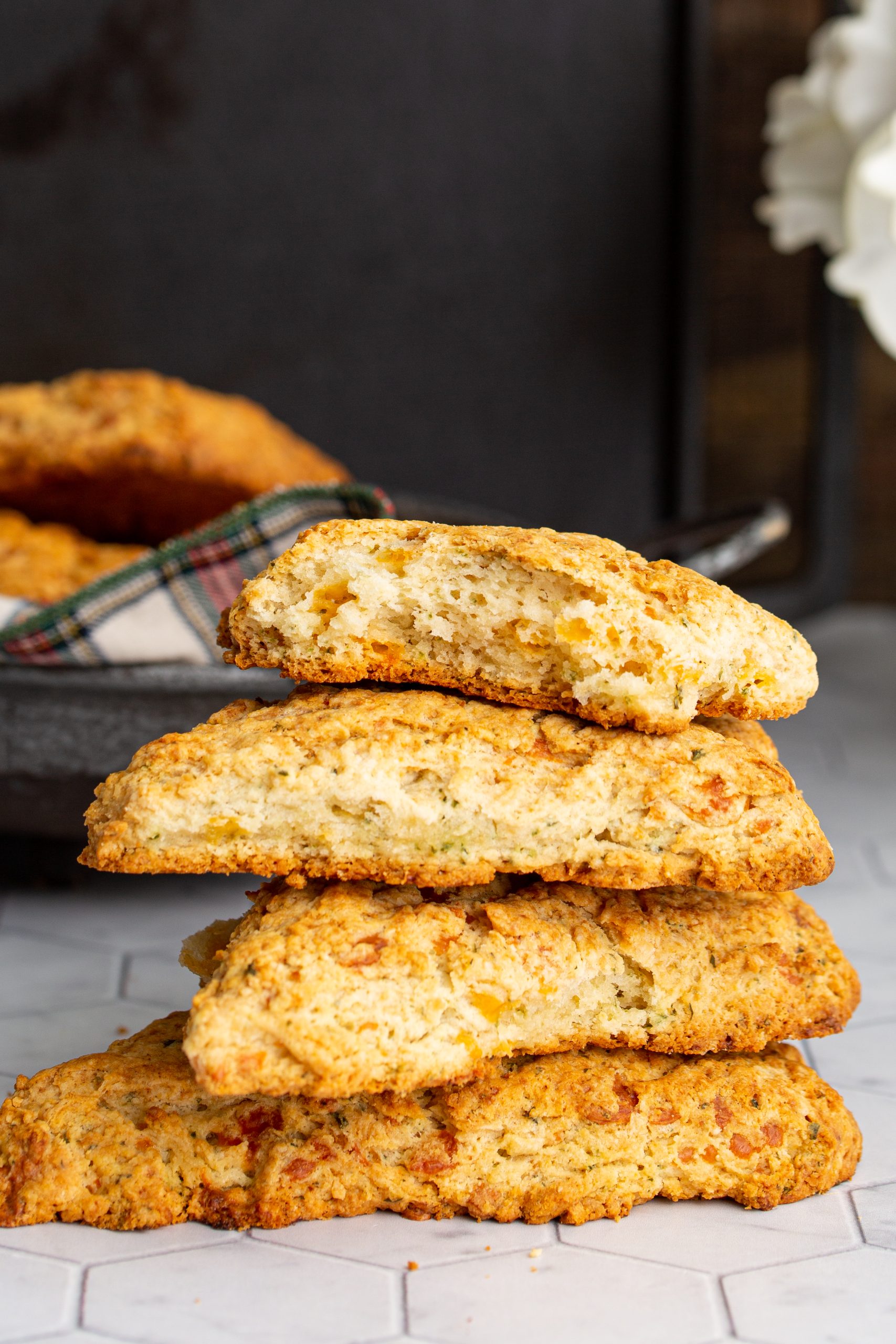
Cheese Options for Scones
While cheddar cheese is a classic choice for scones, many other types of cheese can be used to add flavor and texture to your scones. Here are a few ideas:
- Parmesan: Parmesan cheese has a strong, salty flavor that pairs well with herbs and can add a nice crunchy texture to scones.
- Gouda: Gouda cheese has a nutty, buttery flavor that can add richness to scones. It also melts well, making it a good choice for cheesy scones.
- Blue cheese: Blue cheese has a bold, tangy flavor that can add a unique twist to savory scones. It pairs well with herbs like thyme or rosemary.
- Feta: Feta cheese has a salty, tangy flavor that can add a Mediterranean flair to scones. It also pairs well with ingredients like olives or sun-dried tomatoes.
For a sweet version try orange chocolate chip scones.
Cheddar Herb Scones FAQs
Use all cold ingredients:
The texture of scone dough should be wet and sticky—but not so much that it cannot hold its shape. While mixing the dough, start with 1 cup of milk, then about 1/2 cup at a time until you get the wet shagginess you’re looking for. The dough should be 90% to 95% hydrated.
If you have the time, allow the shaped scones to rest for 10 minutes on the cold griddle before baking. You can refrigerate the dough for scones overnight when pre-shaped into a disc or fully shaped into a scone. Resting the dough relaxes the gluten. Refrigerating the dough will solidify any
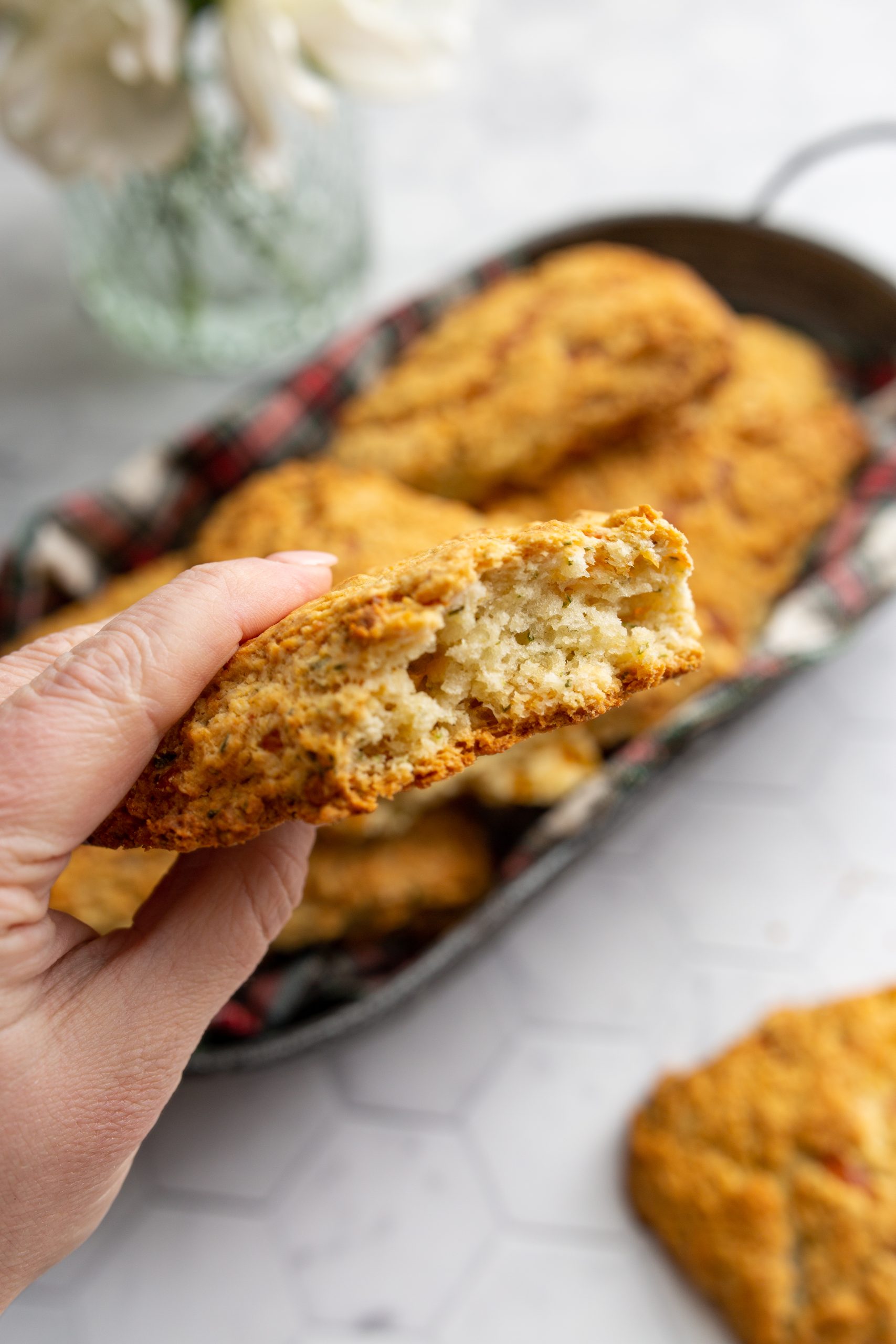
How to Store Leftover Scones
Store leftover scones in an airtight container or bag for 1-2 days at room temperature. After that, they will start to dry out. You can reheat them in a microwave wrapped in a damp paper towel for 30 seconds to rehydrate slightly. But do not throw them away if they are on the drier side, simply serve with a hearty chili or soup and they will soak up excess liquid, becoming tender again.
You can also store these wrapped and in the refrigerator for about a week.
Leftover scones can be frozen for later use. To freeze scones, allow them to cool completely and then wrap them tightly in plastic wrap or aluminum foil. Place the wrapped scones in a freezer-safe container or bag and store them in the freezer for up to three months.
How to thaw Cheddar Herb Scones
To thaw frozen scones, remove them from the freezer and let them come to room temperature for about an hour. You can also reheat frozen scones in the oven by preheating the oven to 350°F (175°C), placing the scones on a baking sheet, and baking them for 10-15 minutes or until heated through.
Remember that frozen scones may not be quite as tender and flaky as freshly baked scones, but they are still a great option for a quick and easy breakfast or snack.
More recipes you’ll enjoy
- Sausage Cheese Scones
- Easiest Pumpkin Scones
- FRESH CHERRY SCONES
- Freshly Ground Black Pepper Mascarpone Scones
- Dried Cherry Pistachio Scones
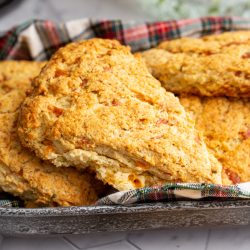
Cheddar Herb Scones Recipe
Ingredients
- 4 cups Self-Rising Flour if using All-Purpose add 2 additional teaspoons of baking powder
- 1 Tablespoon granulated sugar
- 2 teaspoons baking powder
- 1 teaspoon salt
- 1 Tablespoon dried parsley
- 1 teaspoon garlic powder
- 12 Tablespoons butter cold and cubed
- 4 ounces Cheddar cheese
- 2 cups whole milk cold
- 2 Tablespoons butter melted for topping
Instructions
- Preheat the oven to 375℉.
- Sift the dry ingredients (flour, salt, sugar, baking powder) through a fine mesh strainer into a large mixing bowl. Whisk in the dried parsley and garlic powder.4 cups Self-Rising Flour, 1 Tablespoon granulated sugar, 2 teaspoons baking powder, 1 teaspoon salt, 1 Tablespoon dried parsley, 1 teaspoon garlic powder
- Work the cubed butter into the dried ingredients using a pastry cutter or gloved hands until the mix resembles coarse bread crumbs.12 Tablespoons butter
- Add the cheese and 75% of the milk. Work with gloved hands to mix the dough together. Add more milk a little as needed until the dough is 95% saturated.4 ounces Cheddar cheese, 2 cups whole milk
- Transfer to a lightly floured surface, lightly knead or fold so the dough is completely saturated, shaggy, and sticky.
- Halve the dough and shape into two large rounds about 1/2 inch in thickness using your hands or a rolling pin. Use a sharp knife to portion 8 scones from each round.
- Working in batches, add the scones to the flat side of a griddle with about 1 inch of spacing between each scone. Brush with melted butter on the tops. Bake for 15-20 minutes for smaller scones or if making only 8 scones bake for 25 minutes.2 Tablespoons butter
- Bake for 15-20 minutes for smaller scones or if making only 8 scones bake for 25 minutes. Remove from the oven and transfer to a cooling rack. Allow the cast iron to cool between batches.
Nutrition
Nutritional information given is an automatic calculation and can vary based on the exact products you use and changes you make to the recipe. If these numbers are important to you, I recommend calculating them yourself.

These are hands down the best cheddar scones. Thanks for all the great tips!